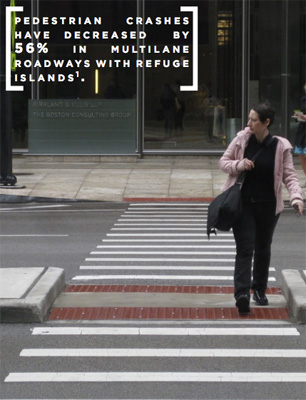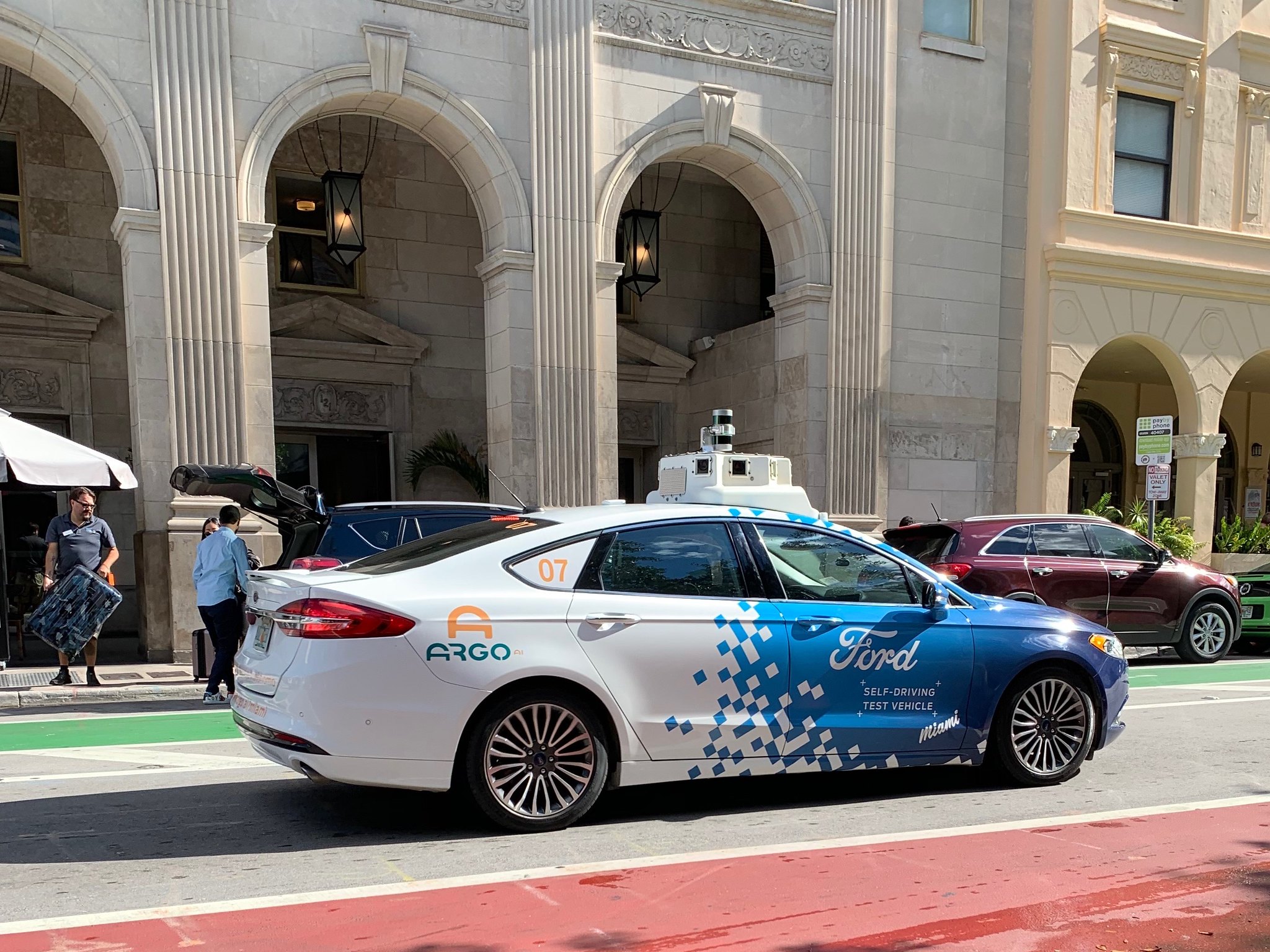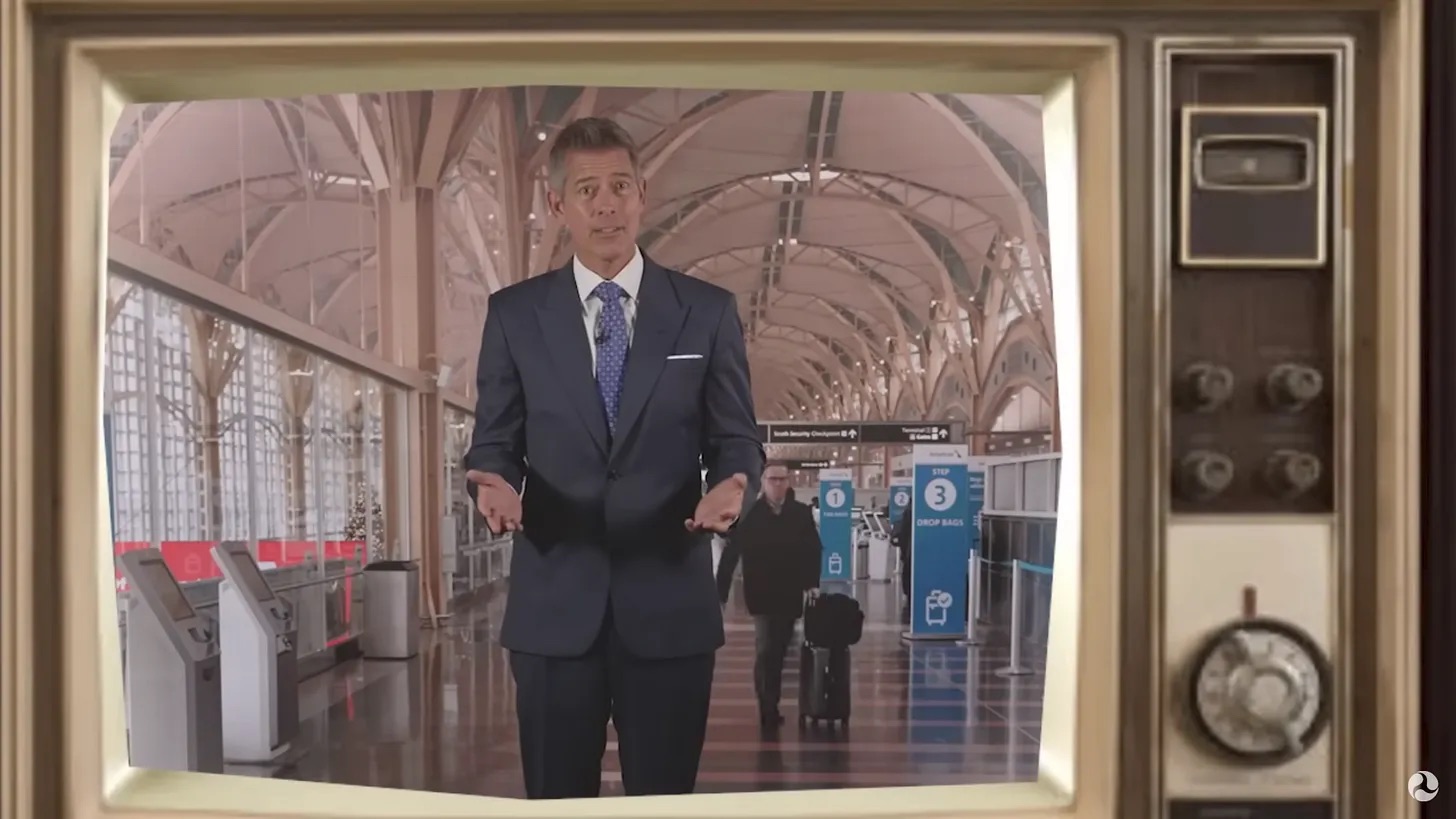Yesterday, the city of Chicago rolled out a sweeping new plan for pedestrian safety [PDF]. With some 250 recommendations -- including traffic-calming measures like pedestrian islands, chicanes and midblock curb bumpouts -- Chicago joins cities like New York and Portland in formalizing a plan to meet targets for reducing pedestrian injuries and deaths.
Chicago Department of Transportation Director Gabe Klein aims to bring the total number of pedestrian fatalities down to zero in 10 years time. Currently about 50 pedestrians are killed annually on Chicago streets.
"We want pedestrian safety to be at the forefront of everything we do," Klein told the Chicago Tribune. "Everyone in the city is a pedestrian."
The plan was developed after a series of public meetings. It calls for identifying and repairing two high-collision corridors and four dangerous intersections annually, basing the interventions on crash data. Chicago also aims to improve driver education, conduct police crackdowns on dangerous drivers, and implement tougher safety mandates for taxis.
A wide variety of street infrastructure treatments are listed in Chicago's toolkit, including road diets, roundabouts, speed humps and pedestrian scrambles -- a signal phase for pedestrians only. Even nagging headaches like snow removal lapses and sidewalk closures for construction -- treated as a fact of life in most places -- are addressed.
Better connectivity for walking trips is another goal. CDOT recommends filling in gaps in the pedestrian network, improving walking routes to transit, and enhancing pedestrian wayfinding systems.
Each recommendation contains a timeframe for implementation, and the plan calls for CDOT to evaluate its progress at regular intervals.

CDOT's plan takes special care to protect the city's most vulnerable pedestrians, calling for longer pedestrian crossing times within one-eighth of a mile of senior housing centers and schools. It also recommends expanding local "safe passage" to school efforts, and making walkability a factor in school siting decisions.
Chicago’s 2011 Pedestrian Crash Analysis found that kids between the ages of 15 and 18 were the most frequent victims of car-pedestrian collisions. The study also found that senior citizens were 10 percent more likely than the average person to be struck by vehicles.
In recent years, pedestrian safety has been improving in Chicago. In 2009, the city recorded 34 pedestrian deaths, a 16-year low. That year, 503 pedestrians were seriously injured, down 20 percent from 2005.
But Klein is not satisfied.
“We want to set an aggressive goal that forces us in every element of our job to look at pedestrian safety and make it everything we do,” he told the Chicago Sun Times. "If at the end of the day, two people are killed, heaven forbid, versus zero, I will still feel like we made huge, huge progress.”
That goal is what impresses John Greenfield of Grid Chicago about the plan, although he, as well, has doubts about how achievable it is.
"I think the plan basically just codifies what [Klein and Mayor Rahm Emanuel are] already doing," Greenfield said. "They’ve been very busy restriping crosswalks, installing leading pedestrian interval walk signs [that give peds a jump on cars]. They’ve been adding pedestrian refuge islands in a lot of locations."
The Chicago Pedestrian Plan appears to draw inspiration from New York City's 2009 Pedestrian Safety Study and Access Plan. This could be a trend that saves countless lives, if a new wave of cities begin systematically analyzing the dangers to pedestrians and taking concrete actions to make streets safe for walking.






